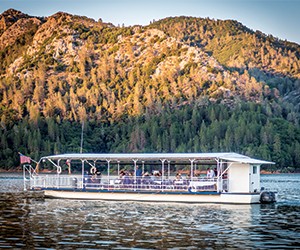For California, the past year has been a time of both upward momentum and daunting challenges.
Exciting new event-friendly enhancements—everything from state-of-the art sports arenas to luxe rooftop pool bars with 360-degree views—are making California cities more of a magnet than ever for meetings. At the same time, cities are grappling with the flip side of economic boom times, most noticeably homeless encampments in the shadow of some of the nation’s priciest real estate.
California’s resort destinations are also filled with new options for meetings and leisure tourism, but some of these areas have been seriously threatened by what is possibly the worst wildfire season in the state’s history.
Through it all these communities have shown remarkable resiliency, with their biggest remaining challenge to get the word out that they’re open for business and their scenic allure is not lost.
Growing Pains
While meetings demand is higher than ever in San Francisco, the city received a wakeup call recently when a Chicago-based medical association opted not to book a meeting there, citing concern over street conditions as the reason.
“We definitely have issues in that we’ve grown so fast in a short amount of time, with more people living and working here than in any time in history,” said Joe D’Alessandro, president of the San Francisco Travel Association. “We’re a very expensive place to live and people have been forced out of their homes.
"We need to do a better job of keeping the streets clean and we’re working on this with the city, including our police chief and new mayor."
Tackling the problem is a delicate balance, he added.
“We want to be the city of St. Francis and show compassion to people,” he said. “At the same time, we can’t tolerate illegal behavior. What is key is that our safety record is getting better all the time.”
[Featured Q&A: SF Travel CEO Speaks Out on Safety Concerns]
Los Angeles Tourism has taken steps to provide a safe and comfortable atmosphere for attendees walking to and from the downtown convention center, according to Darren Green, senior vice president of sales for the Los Angeles Tourism & Convention Board.
“We have what we call human arrows—people who guide attendees to the restaurants and shopping near the convention center,” he said. “What happens organically is that people feel more comfortable and are less likely to have a negative interaction.”
Green said a recent event at the Los Angeles Convention Center held during the annual convention of the American Academy of Neurology provided an opportunity to address some of the problems associated with homelessness and mental health issues.
“They had a Brain Health Fair, with free admission for the community, which offered brain scans and taught people how to identify problems and find resources,” he said. “Every city is challenged by homelessness and you can’t pretend it doesn’t exist.”
Trial by Fire
This past summer’s devastating fire season was particularly hard felt in the Northern California city of Redding, where the Carr Fire forced mass evacuations and cut a swath through the beautiful Whiskeytown-Shasta-Trinity National Recreation Area just east of town.
Jennifer Fontana, industry relations and group coordinator for the Redding CVB, was putting the finishing touches on a new promotional meetings video right before the fire broke out.
Although nearly 230,000 acres burned in the region, Redding’s downtown business district was spared and such local attractions as the Sundial Bridge, Turtle Bay Exploration Park, Lake Shasta Caverns, Castle Crags State Park and Mount Lassen National Park are open. According to Fontana, the experience has been both “heartbreaking and inspiring” and showed the resiliency of the community.
“Although residential areas lost structures, none of our hotels were shut down,” she said. “In fact, our lodging properties did an amazing job of accommodating firefighters and first responders. It spoke volumes about how they can welcome and handle large groups of people. The landscape will regenerate and come back stronger than ever—and our community will, too.”
Resiliency is also seen in Napa and Sonoma counties, where a wide-raging firestorm last October dealt its worst blow to Santa Rosa, resulting in the destruction of over 1,500 structures, including two hotels and one winery. Despite this, planners can expect to find the same great Wine Country meeting experiences that existed before the fires, according to Jennifer Richards, vice president of sales for Sonoma County Tourism.
“Our community has really rebounded, and you really can’t tell what happened,” she said. “Our message is that we’re open for business and we want you to come here.”
While wildfires, heavy rain and mudslides wreaked havoc in Santa Barbara County last winter, particularly in upscale Montecito, the impact on meetings and visitor infrastructure was minimal, according to Michelle Carlen, director of sales for the Santa Barbara CVB.
“While the Four Seasons had to close because of damage from debris flow, it reopened in June after a major refresh,” she said. “And the Rosewood Miramar Beach Montecito is still set to open 2019, pretty much on target despite the rains and fire.”
This article is part of our 2018 Meetings Today California Destination Supplement.







